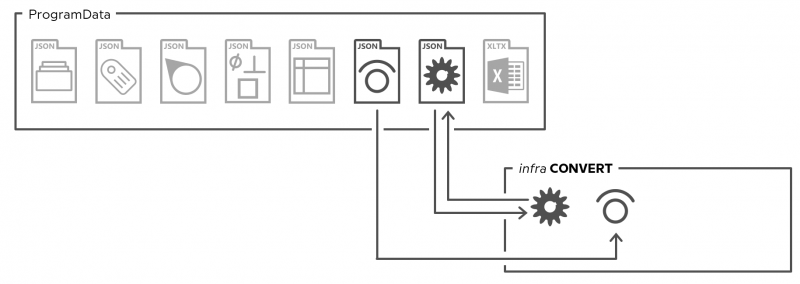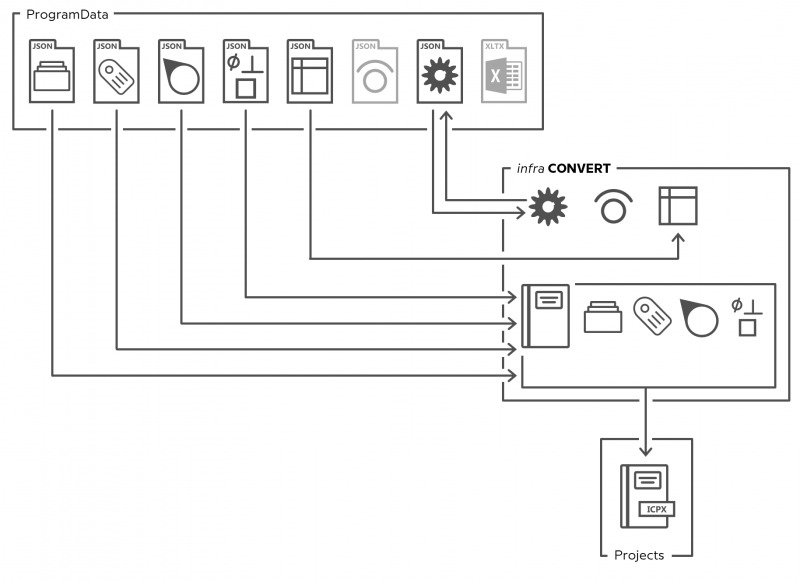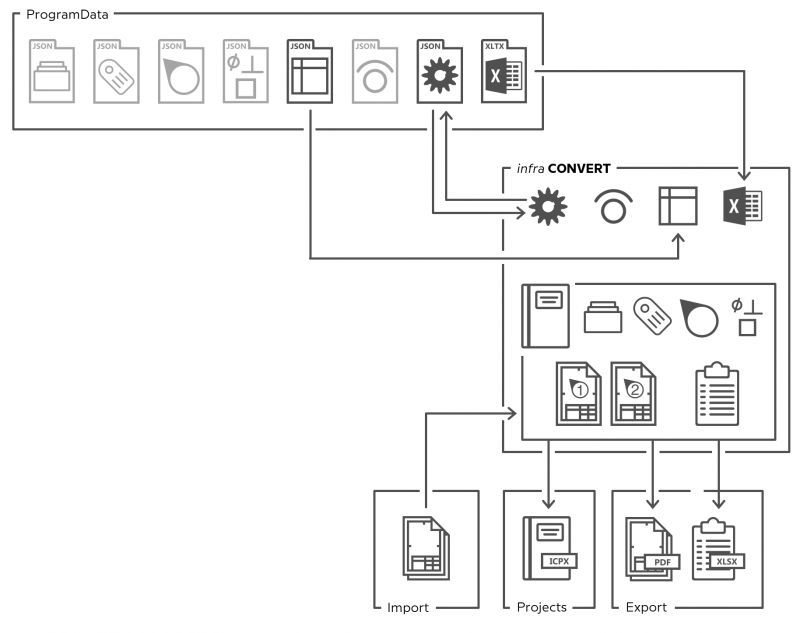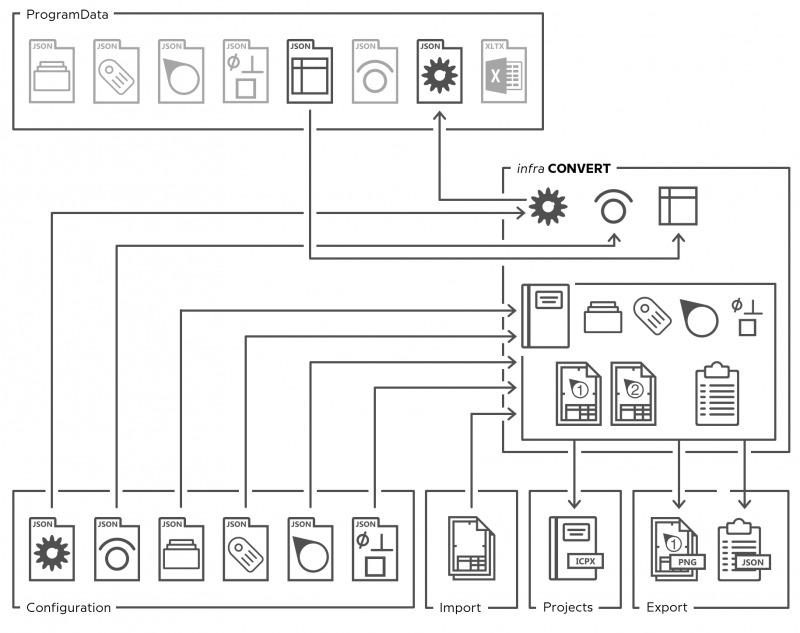Overview (program version 1)
This overview is valid for infra CONVERT versions 1.x.x.x. The overview for the versions 2.x.x can be found on the following page.
Program and project settings are transferred to infra CONVERT as parameter files. The parameter files are written in the JavaScript Object Notation (JSON, see also here). The flow of input and output data can be simplified as follows.

During installation, parameter files with default values are stored in the directory “%ProgramData%\ELIAS GmbH\infra-Convert”. The parameter files are read either when the program is started, when a new project is created or, if required, during runtime.
| File | Content | Description | |
|---|---|---|---|
| Transfer on program start | |||
| | settings.json | Program or basic settings | Configuration and import > "Settings" Parameter file |
| | UiAccess.json | Accessibility of the user interface controls (lock or hide controls) | Configuration and import > "UiAccess" Parameter file |
| Transfer when creating a new project | |||
| | SpecialCategories.json | Categories | Configuration and import > Parameter file "SpecialCategories" |
| | CharacteristicTags.json | Tags | Configuration and import > Parameter file "CharacteristicTags" |
| | StampTemplates.json | Stamp templates | Configuration and import > Parameter file "StampTemplates" |
| | CharacteristicClasses.json | Classes | Configuration and import > Parameter file "CharacteristicClasses" |
| Read during runtime | |||
| | *.json | Tolerance tables (several files) | Configuration and import > Parameter file “Settings” > List of the settings > “Project settings > Tolerance tables” menu Configuration and import > Tolerance tables |
| | *.xltx *.xltm | Excel test report templates | Configuration and import > Parameter file “Settings” > List of the settings > “Settings > Export” menu User Manual > More > Create and customize Excel templates |
Working with parameter files
The program settings (“settings.json”) are loaded when infra CONVERT is started. Changes made by the user (Edit (menu bar) > Settings) are directly written back to them. With the “UiAccess.json” individual controls can be locked or hidden.

When a new project is created, the parameter files for categories, tags, stamp templates and classes are used as templates. This means that the definitions are read once and saved in the project. The definitions for categories, tags and stamp templates can be adjusted in the user interface (Edit (menu bar) > Project Settings). The definitions of classes cannot be changed afterwards. Saving the definitions in the project ensures the interchangeability of projects. Tolerance tables are read out during runtime as required, for example when creating a characteristic or changing characteristic properties. In the following example, the project file (*.icpx) is saved in a “Projects” directory.

In the example, two drawing sheets are now imported into the project from the “Import” directory. The user creates the test plan based on these. Finally, he exports the stamped drawing sheets in PDF format and the test plan in the form of an Excel test report (*.xlsx) to the “Export” directory. The template for the test report is an Excel template file (*.xltx).

Working with start parameter call
Start parameters can be used to implement automatisms that facilitate the work flow with always the same work processes. This administration is necessary when infra CONVERT is integrated into a CAQ/MES system and also useful when the user is to be given standard settings and workflows. The available start parameters are combined in a start parameter file, see “Configuration and Import > Startup parameter file”.
Note With the start parameter “forceConfigDir”, a different directory than the ProgramData directory can be specified. It is the only one not passed in the start parameter file, see “Configuration and Import > Startup parameter file”.
The following example shows some possibilities for working with start parameter calls. In the start parameter file a “settings.json” and a “UiAccess.json” is referenced. For example, the “Configuration” directory may be located on a corporate server. When infra CONVERT is started these parameter files are loaded instead of the parameter files in the ProgramData directory. The “settings.json” contains a selection of possible settings, which overwrite the local settings of the user.

Furthermore, the exemplary start parameter file specifies that
- a new project with the definitions for categories, labels, stamp templates and classes from the “Configuration” directory is created immediately after the start
- two drawing sheets can be loaded from an “Import” directory directly into the first test plan version
- the project file must be saved in the “Projects” directory and
- when saving, the stamped drawing sheets are exported as PNG graphics and the test plan in JSONV1 format to the “Export” directory